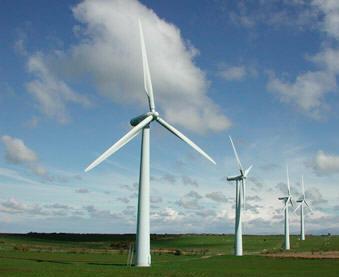
NEWSROOM
 |
NEWSROOM |
|
|
|
|
|||
|
By Daniel Baxter |
||||
 |
Dec. 8, 2009 - Raytheon has been awarded a contract by the
"We are developing this much-needed technology with NATS to eliminate
potential radar blackout zones near wind farms and enable the U.K. to
continue its progress in developing safe, renewable energy resources,"
said Andy Zogg, Raytheon Network Centric Systems vice president of
Command and Control Systems. "This contract award is a strong
endorsement of our leap-ahead technology and will enable our customer to
move forward with its greening of energy production."
Wind farm turbines create a Doppler effect as they rotate, creating a
potential radar blackout zone. The Raytheon solution uses hardware and
software to detect the turbines on radar systems, which eliminates
interference with radar displays. |
|||
|
Under the $6.5 million contract, Raytheon will develop and test advanced
mitigation algorithms within its S-band approach and L-band en route
primary surveillance radars. Raytheon will also develop and test
advanced post-processing tracking algorithms, along with a full PSR
modeling and simulation capability that validates enhancements and
serves as a tool for rapid development of future improvements.
Wind
turbine farms are prohibited within line of sight of Primary
Surveillance Radars and in close proximity to Royal Air Force (RAF)
Airfields.
The study used a scoping exercise over the period from November 3-4,
2004, utilizing the Watchman radar at
A Watchman Radar was deployed to a privately owned site in
|
||||
|
The aim of the Trial was to determine the effects of wind turbine farms
on the ATC area and airfield primary surveillance radars. This was
achieved by tasking scripted sorties with a variety of aircraft types to
over-fly the subject wind turbine farms. The radar video display was
assessed during the Trial and radar video output was captured for
analysis.
This displayed clutter was assessed as highly detrimental to the safe
provision of Air Traffic Services. ATC operators were unable to
differentiate between returns from the turbine blades and those from
real aircraft. Therefore, for the purposes of achieving separation, the
ATC operator would be obliged to treat turbine-induced returns as though
they were aircraft. Finally, the Probability of Detection (PD) of
aircraft by the Watchman Radar was considerably reduced when aircraft
were overhead, or in close proximity to the wind turbines. |
| ?AvStop Online Magazine Contact Us Return To News |
|